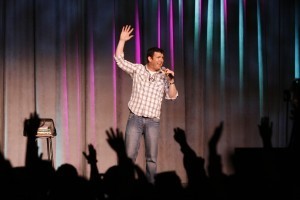Icebreakers: From a Bunch to a Team
Do you remember going to an event where you never left your seat or exited the event without getting to know the name of the person sitting in front of you? If yes, then the event planners may have not paid enough heed to the icebreakers!
An effective and engaging way to start a public speaking event, training sessions, and team-building activities; icebreakers are the ‘hook’ to grip an audience. Not only do they push the event off to a great start, but icebreakers also prove instrumental in getting the audience to know each other, to get acquainted with the objectives of the event, to keep them captivated throughout the proceedings and encourage their participation to the purpose of the event, which contributes to a successful outcome.
When should icebreakers be used?
Just as the name suggests, they should be used whenever you need to “break the ice” within the audience at an event or a meeting. An icebreaker is often used when people from different professional or cultural backgrounds, who may possibly not know each other at all, meet for a common purpose. The icebreaking activities should aim to quickly bond the people towards the event goal, uplift the comfort levels in a newly formed team, throw hints about the upcoming topics of the session, and get the facilitator, or the speaker, and the participants to know each other better.
What to use and where?
An icebreaker activity designed to kick start a high school motivational talk, would be certainly different from one targeted at a professional audience. Make sure to design the activity that is appropriate to the target audience and pertinent to the objective of the meeting. While a Human Bingo may offer a mighty kick off to a student’s networking event; beginning with a short quiz or by stating some relevant news or facts may be more suitable for professional environments. Some popular and effective icebreakers include:
A ‘Raise Your Hand’ round:
This versatile activity works well for any event, corporate or casual, and stimulates the energy level as the audience raises their hands in response to different questions or audience polls.
The Hook:
Start a story but don’t finish it! As your audience gets captivated by the events, stop by saying, “I’ll get back to this towards the end.” This will keep them engaged till the end of the session.
Two Truths, One Lie:
An interactive activity for introduction, this generally works well with smaller groups but can also be effectively employed by selecting random participants to discreetly tell three facts about themselves, of which two should be true and one a lie. The audience keeps guessing the lie in a poll until the participant reveals it.
Brainstorm and Problem Solving:
Tried and tested, these universal icebreakers can either be used to start an event or in the middle, to boost the energy level and creativity of the participants. Get the group organized into smaller teams and assign a simple problem scenario for them to brainstorm and work out in a short time. Each group should then be asked to present their solutions to the other teams. This activity can be used to potentially go through multiple topics in a short span of time.
When designing your icebreaker, it is important to remember that while a good icebreaker can make a successful event, a poor one can break the entire tempo. While activities may always come in handy to mobilize the audience and keep them keyed up, starting off with a joke or an interesting quote may also work as an effective icebreaker to give your audience a promising impression of the event.
Latest posts by Russ Peak (see all)
- A Simple Phrase That Leaders Need To Know - April 18, 2019
- Leaders Are Listeners: 10 Easy Steps to Effective Listening Skills - April 8, 2019
- How To Set Goals | Quality #4: Make Your Goals Personal - April 1, 2019
- How To Set Goals | Quality #3: Make Your Goals Reachable | - April 1, 2019
- How To Set Goals | Quality #2: Make Your Goals Specific - April 1, 2019



